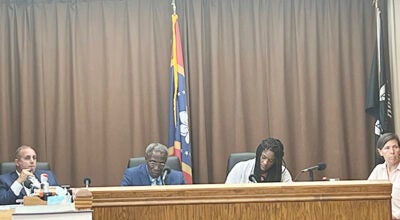Medical coke’s no joke
Published 11:30 am Thursday, February 13, 2014
For a moment, lets forget the smokescreen surrounding both sides of the argument over medical marijuana and take a look at the long history of medical cocaine.
Believe it or not, one of the most addictive and harmful substances known to man has a practical medical use, and I would nearly guarantee that you have at some point have benefited from it.
Unlike marijuana, where patients are asking to puff away at their pleasure to relieve any number of symptoms, cocaine is used only during surgery as local anesthetic.
The topic came up briefly a week ago today at Port City Kiwanis as Dr. Fred Lorenz was discussing his profession as an otolaryngologist, a 50-cent word for an ear, nose and throat doctor.
Lorenz told the club that when he first went into practice, it was not uncommon for doctors to use a cocaine solution to numb the inside of a patient’s nose or mouth.
Its much less common to see the legal use of cocaine in the operating room these days, but it still happens.
The American Academy of Otolaryngology – Head and Neck Surgery even has an official position statement on medicinal cocaine.
The statements says the group “considers cocaine to be a valuable anesthetic and vasoconstricting agent when used as part of the treatment of a patient by a physician.”
It’s not just valuable; it’s the best, they say.
“No other single drug combines the anesthetic and vasoconstricting properties of cocaine,” the statement, which was written in adopted in 1988 and revised last year, concludes.
So how does all this medical cocaine get into the country?
Turns out one organization — the Stepan Company, based in Illinois — has the monopoly on importing coca, the plant used to derive cocaine.
The scientists at Stepan extract the narcotic from the leaves of the coca plant, which is native to South America, and another company refines the cocaine and packages it for medical distribution.
Keep in mind that coca is the same plant our government’s Drug Enforcement Agency pressured South American counties to eradicate in the 1980s.
Here’s where it gets weird and where you and I benefit.
Stepan sells its spent coca leaves — a highly illegal product that would land you or me in jail for years — to the Coca-Cola Company where they are used as part of the “natural flavoring” listed on the back of each and every can or bottle of the famous soda first bottled here in Vicksburg.
Know that slightly bitter, slightly acidic flavor in Coca-Cola? That’s the much maligned coca leaf that our country has been waging war on for three decades.
The Stepan/Coca-Cola connection was revealed in the late 1980s by the New York Times amid speculation that New Coke — remember how awful that was? — was a response to government pressure for a coca-free cola.
Few people have raised much of a fuss, and there’s far less controversy today over medical cocaine and its by-products than prescription pot.
Incidentally, the world’s most popular soft drink was invented by John S. Pemberton, an Atlanta pharmacist who was the nephew of Confederate Lt. Gen. John C. Pemberton who defended Vicksburg in 1863.
I wonder how the Pembertons would feel about being in the medical cocaine business?
•
Josh Edwards is a reporter. He can be reached by email at josh.edwards@vicksburgpost.com





